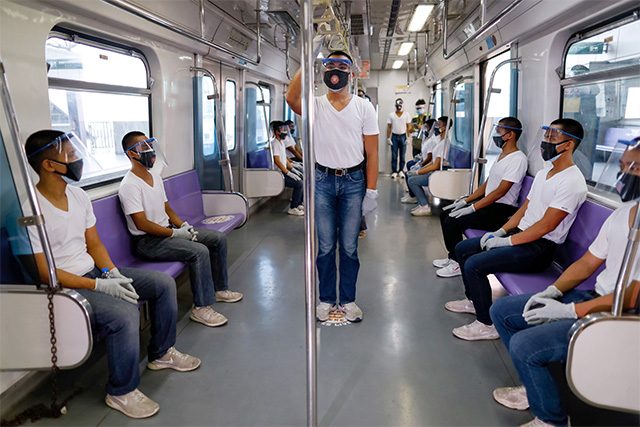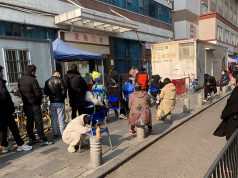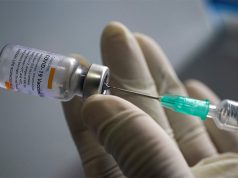
MANILA — Police in the Philippine capital did a dry run on Tuesday of measures to enforce social distancing on public transport and control the spread of coronavirus, a tricky task in a densely populated city known for its commuting chaos.
More than 500 police trainees in Manila posed as rail passengers in an exercise to manage hundreds of thousands of people once public transportation eventually resumes, having being closed for nearly 11 weeks.
Cadets in jeans, white T-shirts and face visors marched up the stairs of a light rail transit (LRT) station before joining orderly queues to platforms and filing slowly into spacious train carriages.
“From early morning up to late at night there is always a line of passengers waiting to ride a train. We are doing this simulation to better prepare for the smooth operations of the LRT,” said Metropolitan Manila police chief Debold Sinas.
On a normal day, millions are on the move in and around Manila, pushing transport networks to their limits.
Commuters typically use several different modes of transport to get to work, joining long, snaking queues and before packing tightly into buses, passenger jeeps and trains.
Manila has been under community quarantine since March 16 in one of the world’s longest coronavirus lockdowns. That was modified 10 days ago to ease some restrictions and the government will meet on Wednesday to decide whether to relax them further.
The Philippines has reported 14,669 cases of the coronavirus and 886 deaths.
LRT spokesman Hernando Cabrera said social distancing meant each train will carry only 10% of its maximum passenger load, making it difficult to managing the flow of people at stations.
“Only 160 passengers will be allowed. It’s a very big challenge for us to maintain and control the crowd once operations begin,” he said. —Reporting by Adrian Portugal; Writing by Martin Petty; Editing by Janet Lawrence









